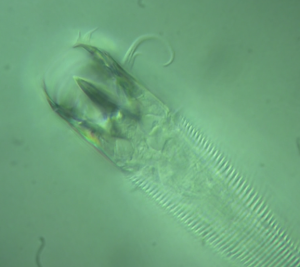
I’m sure you’ve noticed by now how much the media loves tug-on-the-heartstrings images of oiled birds, dead fish and mile-wide slicks. But have you heard about the millions of casualties in every square foot of mud? The news reports overwhelmingly fail to mention how this oil disaster is affecting a keystone group in marine ecosystems—nematode worms. Ok, so they’re not quite as cute and cuddly (unless you have a certain fondness for minute specs on a microscope slide), but this large and diverse phylum pretty much runs the show in marine sediments. Nematodes account for 85-95% of the organisms inhabiting deep-sea ooze (Gage & Tyler, 1992) and are hugely abundant, with 100,000 (abyssal plains) to 84 million (intertidal mud) worms living in every square meter (Lambshead, 2004).
There’re also quite cool to look at, with lots of interesting morphology—don’t you dare let anyone tell you that they “all look the same”:

Why should we worry about things we can’t see?
Well, nematodes underpin ecosystem function. The diversity of feeding habits amongst species (eating everything from bacteria, fungi, alage, diatoms and even other nematodes) coupled with sheer numbers makes them important primary consumers at the base of countless food webs. Diverse meiofauna communities play important roles in bioturbation (vertical oxygen movement), nutrient release and cycling (Snelgrove et al., 1997). Most importantly, the deep-sea benthos is directly dependent on productivity and organic flux from the overlying surface waters. Translation: an oil slick larger than Rhode Island equals very unhappy nematodes.
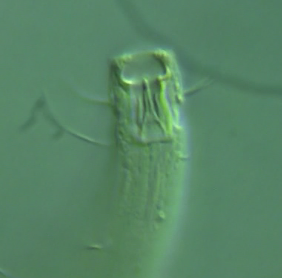
The precise impacts of the Gulf Spill on meiofaunal communities are unclear, but the few facts don’t look promising. Nematodes (shockingly!) don’t like oil; tar particles cause significant mortality and community abundances show an immediate, sharp decline in response to hydrocarbon stress (Danovaro et al. 1995). Chronically polluted sites have distinct community structures, and long-term exposure appears to reduce both the trophic diversity (feeding types) and number of genera present (Wang et al 2009). Meiofaunal communities after the Amoco Cadiz (a “measly” 1.6 million barrels, compared to probably 3 million barrels and counting in the Gulf) were still depauperate 2½ years later, with the strongest lasting effects seen in estuarine mud (Boucher 1985). There is no data on how deep-sea benthic communities might be affected, but all those dispersants are great for bringing oil down through the water column. The deep-sea doen’t have the same high-energy hydrodynamics as intertidal habitats, and decomposition processes occur much slower with increasing depth—meaning oil will continue to stagnate in this ecosystem for much longer.

What I find most sickening is that we don’t even know what we’re losing. At least we can name the species of dead fish, count the losses, and use our extensive biological knowledge to study impacts and recovery. For smaller organisms, no such luck—we don’t know anything about their biology, life cycles or reproduction. Out of an estimated 1 million to 100 million nematode species a mere 5% of total estimated diversity has been described, representing the largest taxonomic deficit for any group of animals (even bigger than for insects, Hugot et al. 2001). Nematodes don’t have any obvious means of dispersal and many species are regionally restricted (De Mesel et al., 2006). Any given deep-sea region may harbor a trove of endemic species and unique genetic diversity—it’s a horrifying thought, but the Gulf spill may be silently erasing thousands of years of nematode evolution.
So next time you see a picture of an oiled vertebrate, spare a thought for the worms. Nematodes might be uglier, tinier, and in desperate need of a PR specialist, but the marine ecosystem can’t function without them.
Boucher G (1985) Long term monitoring of meiofauna densities after the Amoco Cadiz oil spill. Marine Pollution Bulletin 16:328-333
De Mesel I, Lee HJ, Vanhove S, Vincx M, Vanreusel A (2006) Species diversity and distribution within the deep-sea nematode genus Acantholaimus on the continental shelf and slope in Antarctica. Polar Biology 29:860-871
Danovaro R, Fabiano M, Vincx M (1995) Meiofauna response to the Agip Abruzzo oil spill in subtidal sediments of the Ligurian Sea. Marine Pollution Bulletin 30:133-145
Gage JD, Tyler PA (1991) Deep-Sea Biology: A natural history of the organisms at the deep-sea floor, Vol. Cambridge University Press, Cambridge
Hugot JP, Baujard P, Morand S (2001) Biodiversity in helminths and nematodes as a field of study: an overview. Nematology 3:199-208
Lambshead PJD (2004) Marine Nematode Biodiversity. In: Chen ZX, Chen, S.Y., and Dickson, D.W. (ed) Nematology: Advances and Perspectives, Vol 1. CABI Publishing, Wallingford, p 439-468
Snelgrove PVR, Blackburn TH, Hutchings P, Alongi D, Grassle JF, Hummel H, King G, Koike I, Lambshead PJD, Ramsing NB, Solis-Weiss V, Freckman DW (1997) The importance of marine sediment biodiversity in ecosystem processes. Ambio 26:578-583
Wang Y, Chen H, Wu J (2009) Influences of chronic contamination of oil field exploitation on soil nematode communities at the Yellow River Delta of China. Frontiers in Biology in China 4:376-383


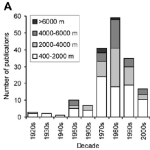

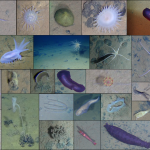
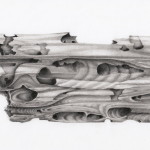
Some coastal marine biologists have been working diligently to spare some of the sea life, even going so far as to asking BP for money. Would and is there a way to remove some of these nematode communities to preserve some of them? I know many species are connected to a certain area, but we need to look at the long term effect of this oil spill. Now we are in hurricane season, which does not help at all.
Horrifying. Who knows what results will come from the loss of many of these tiny critters?
It would be interesting to see if and how fast the populations recover… I imagine that recolonization would take place from the ‘edges’ of the affected area, from isolated refugia, and from sediment carried by birds and people, and that there would be a gradient of return as the more oil tolerant species get a foothold first. Its possible that the dynamics of how these organisms return and in what order (and of course, the dynamics of how their prey returns) could result in a microfauna ecology very different from what existed before the slick.
Of course, anyone researching this would have to promise not to publish anything for years and years… can’t say that would be a big incentive.
I’ve always been a little skittish about nematodes. Always wonder if they are harmless.
I have a vision of a totally anaerobic environment with sulfur as the dominant element reducing agent. Nothing good ever comes of sulfur being dominant. Takes a lot of effort to reverse.